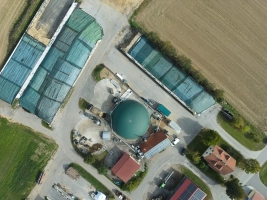International Round up

- Solar Highways In China,
The latest sign of China’s desire to innovate in, and dominate, the increasingly large and strategically important market for renewable energy has seen the country develop and examine solar roads. The experiment involved replacing asphalt with plastic solar panels that run across a road in Jinan.
If successful, generating electricity from highways and streets, rather than purpose-driven solar parks will conserve a lot of land in the heavily populated country. As roads run through and around cities, the electricity could be used practically next door to where it is generated. So that in an ideal situation, absolutely no power would be lost in transmission. And the land is essentially free because roads are needed anyway. Roads must be resurfaced every few years at great cost, so the installation of durable solar panels could reduce the price of maintenance.
2. Global demand to take a hit, post changes in Chinese policies,
According to Taiwan based market research firm EnergyTrend, the new regulations imposed on utility-scale and Distributed Generation (DG) solar markets in China will lead to a decline in demand to be within a range of 29GW to 35GW, with a mid-point forecast of 31.6GW deployed in 2018, a 40% decline. With that, the demand on a global basis for solar is set to decline, year-on-year, for the very first time. The key regulation being changed is a reduction in feed-in tariffs or the compensation paid to generators for excess power supplied to the grid.
Forecasts of global solar demands to decline by around by 5% to 8% in 2018, reaching 92GW to 95GW. The sector is not expected to return to above 100GW demand until 2019 when more new markets emerge, according to the market research firm.
3. World Bank pledges $100 million for 400 MW solar project in Pakistan,
The World Bank has committed US$100 million of funding to support 400MW of solar energy projects in the Sindh Province of Pakistan. The World Bank aims to support this large-scale solar deployment under the Sindh Solar Energy Program (SSEP), starting with an initial 50MW plant, while also offering partial grants for private companies to install solar home systems across 200,000 households.
In the same announcement, the World Bank has also offered US$460.6 million for the Khyber Pass Economic Corridor Project to boost trade between Pakistan, Afghanistan, and Central Asia by supporting private sector investment and reducing transport time and costs. This will include improving transport infrastructure and border crossings.
copyright:iamrenew.com




